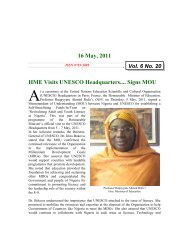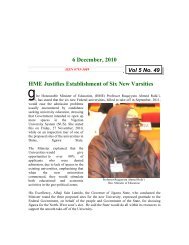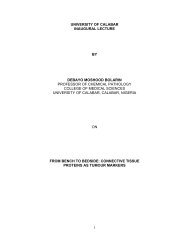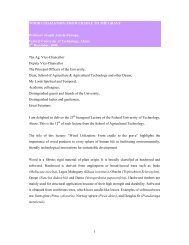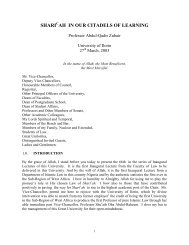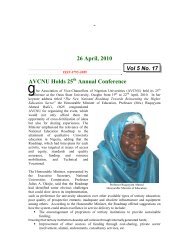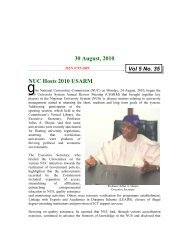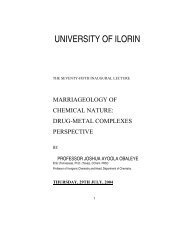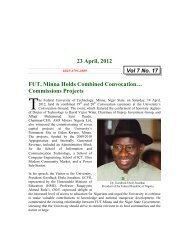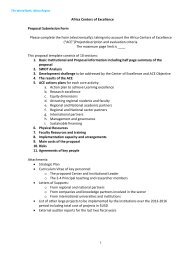THE VARIED ROLES OF SNAILS - National Universities Commission
THE VARIED ROLES OF SNAILS - National Universities Commission
THE VARIED ROLES OF SNAILS - National Universities Commission
Create successful ePaper yourself
Turn your PDF publications into a flip-book with our unique Google optimized e-Paper software.
(known as the lancet fluke). This fluke is a<br />
very common biliary parasite of sheep and<br />
other herbivores and accidentally infects Man<br />
in Japan and China, Europe, N. Africa far<br />
East and Northern Asia.<br />
Eggs passed in faeces are ingested by land<br />
snails Limicolaria Cercariae appear in slime<br />
balls secreted by the snails and are eaten by<br />
ants of the genus Formica in which the<br />
metacercariae develop.<br />
Infection occurs when the hosts accidentally<br />
eat the ants while feeding. Spurious<br />
infections have occurred in persons who ate<br />
infected sheep liver and can pass eggs in<br />
faeces for about a week or several days.<br />
(ii) Eurytrema pancreaticum, is a related fluke<br />
and is commonly present in the pancreas, is a<br />
related fluke and is commonly present in the<br />
pancreatic duct of cattle, sheep and monkeys.<br />
Occasional human infection has been noticed<br />
in China and Japan.<br />
(iii) Intestinal Flukes:<br />
A number of fluke parasites parasitize the<br />
human intestine. These include Heterophyes,<br />
Metagonimus, Wastonium and Echinostoma.<br />
Only one fluke Gastrodiscoides hominis<br />
parasitizes the human large intestine.<br />
The snail intermediate hosts for these are<br />
presented in table 7.<br />
86




